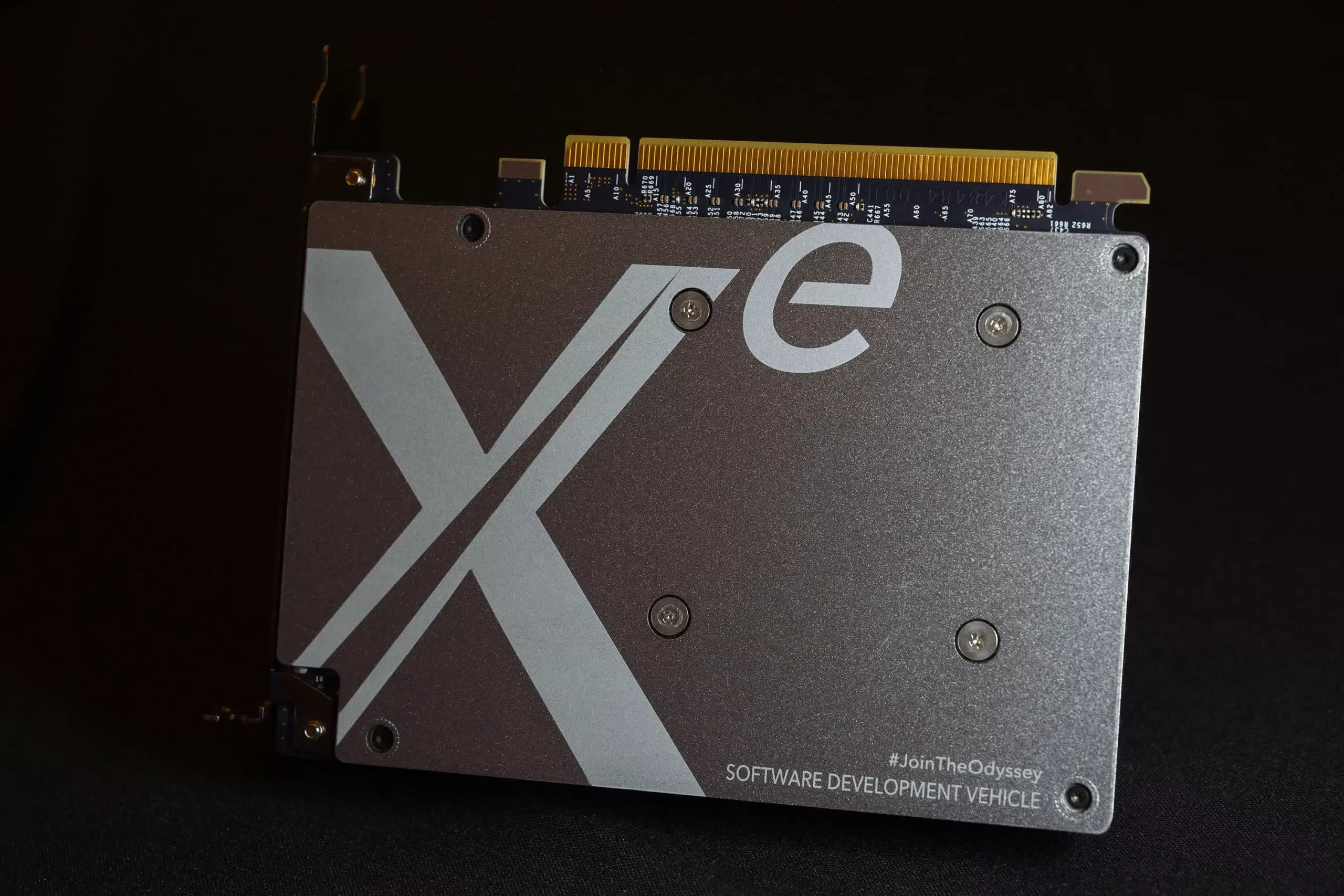What just happened? Rumors surrounding Intel's upcoming Xe-HPG PC gaming graphics card have been circulating for a while, and now we've got our first look at it. Well, the GPU. Company senior vice president Raja Koduri tweeted a photo of the chip, which uses the codename DG2, confirming that at least one of the SKUs will have 512 EUs.

Koduri tweeted that Intel has been testing the GPU at its Folsom, California lab, adding that game and driver optimization is the next step for the team. "Xe-HPG (DG2) real candy – very productive time at the Folsom lab couple of weeks ago," Koduri wrote. "lots of game and driver optimization work ahead for @gfxlisa's Lisa Pearce's software team. They are all very excited and a little scared."
Xe-HPG (DG2) real candy - very productive time at the Folsom lab couple of weeks ago. “From jittery journeys to buttery smooth” said @rogerdchandler -
— Raja Koduri (@Rajaontheedge) June 2, 2021
lots of game and driver optimization work ahead for @gfxlisa’s software team. They are all very excited..and a little scared:) pic.twitter.com/tQcfEWf8p4
Intel's Iris Xe DG1 GPU arrived earlier this year as an add-in card for pre-built desktop systems. With its 80 Execution Units and 4 GB of LPDDR4X with 68 GB/s of bandwidth, it's not exactly set the world on fire; benchmarks suggest it can't even keep up with the $79, four-year-old Radeon RX550.
The DG2, on the other hand, looks to offer something a lot more enticing. Intel has confirmed it is using 512, 384, 256, 196, and 128 EUs, where each EU is similarly performant to eight cores (shaders). The flagship GPU shown here is expected to land somewhere between the RTX 3070 and RTX 3080, performance-wise.
Rumored Intel Xe DG2 mobile specifications
| SKU 1 | SKU 2 | SKU 3 | SKU 4 | SKU 5 | |
|---|---|---|---|---|---|
| EUs | 512 | 384 | 256 | 196 | 128 |
| Boost Clock | 1100 MHz | 600 MHz | 450 MHz | ? | |
| Turbo Clock | 1800 MHz | 1400 MHz | ? | ||
| Memory Capacity | 16 GB | 12 GB | 8 GB | 4 GB | |
| Memory Speed | 16 Gbps | ||||
| Memory Type | GDDR6 | ||||
| Bus Type | 256-bit | 192-bit | 128-bit | 64-bit | |
| TDP (exc. memory) | 100 W | ? | |||
Via Igor's Lab
Replying to another Tweet, Koduri said Intel is looking at technologies such as FidelityFX Super Resolution—AMD's answer to Nvidia's DLSS—to improve the performance of its Xe-HPG PC graphics cards.
Definitely looking at it - the DL capabilities of Xe HPG architecture do lend to approaches that achieve better quality and performance. We will definitely try to align with open approaches to make ISVs job easier..
— Raja Koduri (@Rajaontheedge) June 2, 2021
Intel is turning to TSMC for the manufacture of the DG2 GPUs, which are set to arrive in late 2021 or early next year— Intel's Pete Brubaker said that it "is right around the corner". Whether graphics card availability/pricing will be any better than the current shambles by then remains to be seen.
https://www.techspot.com/news/89919-intel-reveals-xe-hpg-dg2-confirming-512-eus.html